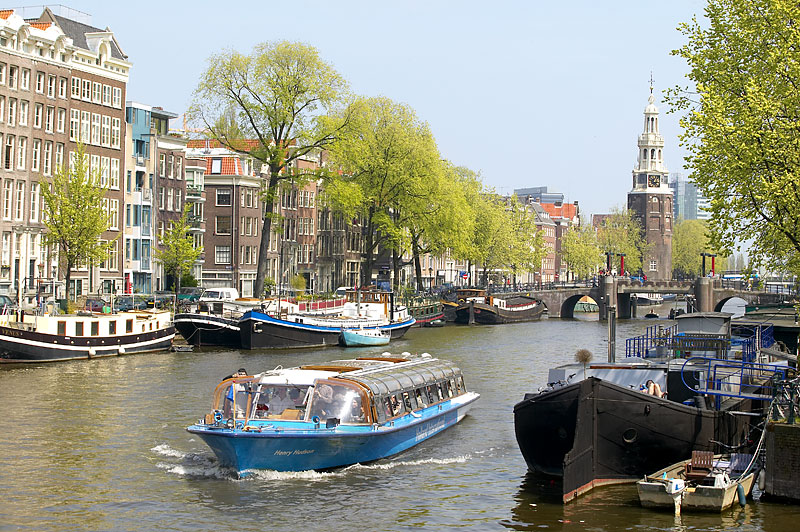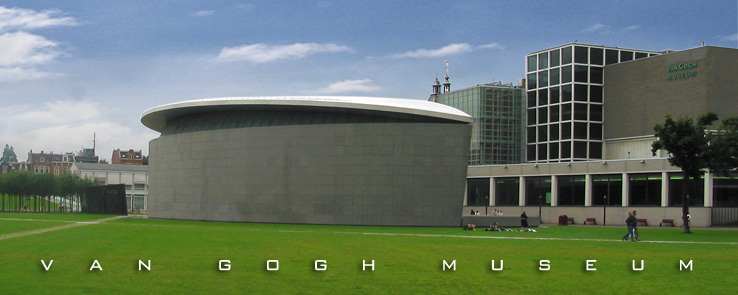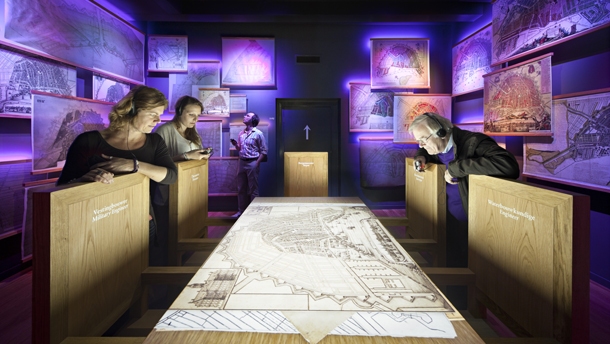Netherlands is the main constituent country of the Kingdom of the Netherlands. It is a small, densely populated country, lying mainly in Western Europe, but also including three islands in the Caribbean. The European part of the Netherlands borders Germany to the east, Belgium to the south, and the North Sea to the northwest, sharing maritime borders with Belgium, the United Kingdom and Germany. The largest and most important cities in the Netherlands are Amsterdam, The Hague and Rotterdam. Amsterdam is the country's capital, while The Hague holds the Dutch seat of government and parliament. The port of Rotterdam is the largest port in Europe – as large as the next three largest combined.
The predominant wind direction in the Netherlands is south-west, which causes a moderate maritime climate, with cool summers and mild winters, and typically high humidity. This is especially true close to the Dutch coastline, where temperatures can be more than 10 °C (18 °F) higher (in winter) or lower (in summer) than in the (south) east of the country.
The official language is Dutch, which is spoken by the vast majority of the inhabitants. Besides Dutch, West Frisian is recognized as a second official language in the northern province of Friesland (Fryslân in West Frisian). West Frisian has a formal status for government correspondence in that province. In the European part of the Netherlands two other regional languages are recognized under the European Charter for Regional or Minority Languages. The first of these regional languages is Low Saxon (Nedersaksisch in Dutch) is recognized. Low Saxon consists of several dialects spoken in the north and east, like Twents in the region of Twente, and Drents in the province ofDrenthe. Secondly, Limburgish is also recognized as regional language. It consists of Dutch varieties of Meuse-Rhenish Franconia languages and is spoken in the south-eastern province of Limburg. The dialects most spoken in the Netherlands are the Brabantian-Hollandic dialects.
The Netherlands: Total population from 2004 to 2014 (in millions) This statistic shows the total population of the Netherlands from 2004 to 2014. In 2013, the total population of the Netherlands was around 16.8 million people.
The Netherlands was a predominantly Christian society until late into the 20th century, with a strong demarcation (pillarisation) between roughly the Catholic south on one side and the Calvinist north on the other side. In the 1960s, this started to diminish. Although religious diversity remains, there has been a decline of religious adherence. The Netherlands is one of the most secular countries in Western Europe, with only 39% being religiously affiliated (31% for those aged under 35), and fewer than 5.6% visiting church regularly (meaning once or more per month) in 2010. Religion is in the Netherlands generally considered a personal matter which is not supposed to be propagated in public.
Dutch cuisine (Dutch: Nederlandse keuken) consists of the cooking traditions and practices from the Netherlands. The country's cuisine is shaped by the practice of fishing and farming, including the cultivation of the soil for raising crops and the raising of domesticated animals, and the history of the Netherlands. Traditionally, Dutch cuisine is simple and straightforward, with many vegetables and little meat; breakfast and lunch are typically bread with toppings while dinner is meat and potatoes, supplemented with seasonal vegetables. The Dutch diet was relatively high in carbohydrates and fat, reflecting the dietary need of the laborers whose culture molded the country, and contains many dairy products. Without many refinements, it is best described as rustic, though many holidays are still celebrated with special foods. In the course of the twentieth century this diet changed and became much more cosmopolitan, with most international cuisines being represented in the major cities.
The Netherlands is both a very densely populated and a highly developed country, in which transport is a key factor of the economy. Correspondingly it has a very dense and modern infrastructure, facilitating transport with road, rail, air and water networks. With a total road network of 139,295 km, including 2,758 km of expressways, the Netherlands has one of the densest road networks in the world; much denser than Germany and France, but still not as dense as Belgium. The Dutch also have a well developed railway network that connects most major towns and cities, as well as a comprehensive dedicated cycling infrastructure featuring some 35,000 km of track physically segregated from motorized traffic.
Road transport:
With 139,295 km of public roads,[1] the Netherlands has one of the most dense road networks in the world - much denser than Germany and France, but still not as dense as Belgium. In 2013, 5,191 km were national roads, 7,778 km were provincial roads, and 125,230 km were municipality and other roads.
Dutch roads include 2,758 km of motorways and expressways, and with a motorway density of 64 kilometers per 1,000 km², the country also has one of the densest motorway networks in the world.
The Netherlands' main highway net (hoofdwegennet) - comparable to Britains net of trunk roads - consists of most of its 5,200 km of national roads, supplemented with the most prominent provincial roads. Although only about 2,500 km are fully constructed to motorway standards, much of the remainder are also expressways for fast motor vehicles only.
Railway Transport:
Most distance travelled on Dutch public transport is by rail. Like many other European countries, the Netherlands has a dense railway network, totaling 6,830 kilometers of track, or 3,013 route km, three quarters of which has been electrified. The network is mostly focused on passenger transport and connects virtually all major towns and cities, counting as many train stations as there are municipalities. The national rail infrastructure is managed by public task company Pro Rail, and a number of different operators have concessions to run their trains.

Canal cruises are one of Amsterdam’s most popular attractions – and with good reason! If you’re visiting for the first time, it’s an excellent introduction to the city’s many sights. There are a number of departure points throughout the city and the tours are available in a multitude of languages. Amsterdam’s many canal cruise operators generally offer a consistent level of quality and customer service. A few of the best-known operators include Holland International, Canal, Blue Boat, Rederij Kooij, Rederij Plas and Lovers. If you’d like to break up your canal cruise with some sightseeing, then the ‘hop-on hop-off’ service offered by Canal Bus is an excellent option. Learn more about the variety of Amsterdam excursions and boat tours available.

For both locals and far-travelling visitors, the Van Gogh Museum is a unique and inspirational experience. Alongside his instantly recognisable impressionist works, such as his landscapes, self-portraits and still lifes – especially ‘Sunflowers’ – the museum provides opportunities to track the artist's development and compare his paintings to works by other artists from the 19th century – those who inspired him and those who drew inspiration from him.

A great place to start exploring Amsterdam's hidden museums is Het Grachtenhuis (Museum of the Canals). This recent addition is a tribute to the Canal District, with multimedia exhibitions showing how the now grand district is really an engineering marvel built on swamp land. From here, visitors can easily explore other museums housed in canal mansions and the museum is even equipped to help them plan their itineraries. Free admission with the I Amsterdam City Card.

Lovers of rock photography will be in their element at the Rock archive gallery, which displays a growing collection of rock and jazz images. More than 50 music photographers are featured, with images ranging from Parisian jazz clubs to Led Zeppelin. Film buffs can hop on the ferry to the view the photo collection at the EYE Film museum in Amsterdam Nord, featuring in excess of 700,000 photographs, slides and negatives.
17B Obour Bldgs, Salah Salem Rd., Heliopolis, Cairo, Egypt
marketing@canyon.travel
operation@canyon.travel
02-22 62 50 54/44